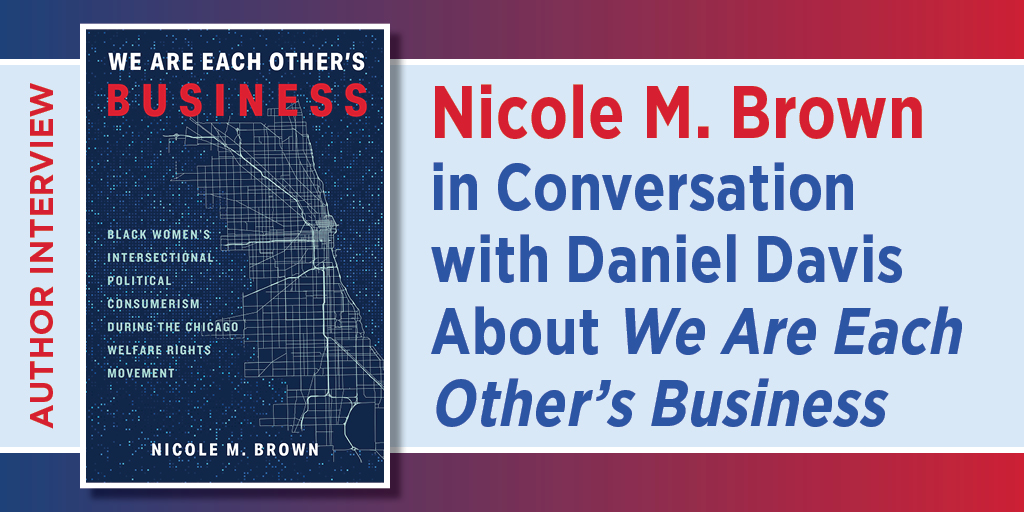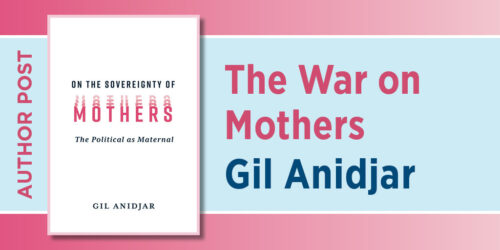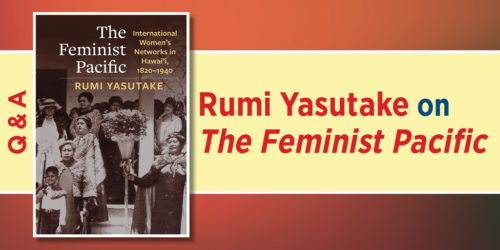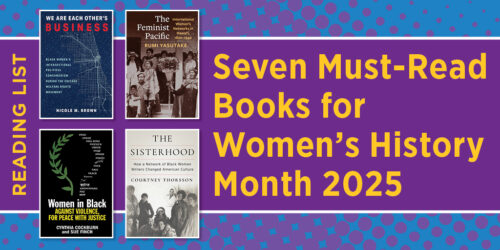Nicole M. Brown in Conversation with Daniel Davis About We Are Each Other’s Business

In the 1960s and 1970s, the Welfare Rights Movement organized at both local and national levels, advocating for poor people’s inclusion, dignity, and autonomy. In We Are Each Other’s Business: Black Women’s Intersectional Political Consumerism During the Chicago Welfare Rights Movement, Nicole M. Brown, associate professor of sociology at Saint Mary’s College of California and founder of the Radical Imagination Laboratory, chronicles Black women’s welfare policy activism, their movement strategies, and the challenges they faced around neoliberal welfare legislation as well as narratives that pathologized Black women, framing them as incapable of making sound financial decisions for themselves and their families. The book analyzes Chicago welfare community organizations and leadership fighting for consumer rights, highlighting the epistemic violence against Black women in both organizational archives and academic discourses.
In this Q&A, Brown discusses her research with aspiring journalist Daniel Davis, who is the features editor of Eagle Era, a student-run news publication for the American high school community. Their conversation explores the book’s audience, Brown’s personal experience growing up on the South Side of Chicago and how that experience shaped her understanding of competing narratives of Black communities, and Black women’s essential—and often overlooked—contributions to social movements.
Daniel Davis: Who should read We Are Each Other’s Business? Why?
Nicole M. Brown: We Are Each Other’s Business is really for anyone who’s interested in learning about social movements, and specifically, the lives and experiences of Black women who led the Chicago Welfare Rights Movement. That leadership may have been formalized, in terms of positions within welfare rights organizations, or informal (i.e., leaders recognized in the community) but anyone who is interested in social movement work and strategy and the challenges faced by marginalized groups and communities as they fight for human rights will find this book compelling.
I think the book will also be appealing for anyone interested in the practical methodological application of intersectional analysis within historical research. Lastly, for anyone like myself who is grappling with how to thoughtfully engage interdisciplinarily, it may be affirming to read this text, which uses concepts from computer science, social science and the humanities to differently frame and appreciate the movement strategies of the Black women featured in the book.
Davis: How did your experiences growing up in Chicago inform or influence your research?
Brown: Chicago is definitely a main character in this book—well, more specifically, Chicago communities. The women who led these Chicago Welfare Rights Organizations (CWROs) were deeply committed to and invested in their communities. They did their movement work in community and rejected the singular—and often male—charismatic leader model. Growing up in a low-income neighborhood on the South Side of Chicago, I can relate to the competing narratives about the community I knew and how others described my community. My community suffered from many of the same issues that come with systemic racism and divestment, but it was also a beautiful and resilient community, in part because of Black women leaders, formal and informal, who believed we were worth fighting for. The women of the welfare rights movement fought for access to consumer credit, for affordable housing, for consumer spaces in their neighborhoods, and for material goods for their families.
I appreciate what my community did for me, and I wanted to reframe the strategies of the women of the welfare rights movement in such a way that they might be differently appreciated for the sophisticated, forward-thinking, and bold activists that they were. This is why I frame their activism as a form of Black feminist technology—because they skillfully used their knowledge of systems and structures for the practical purpose of gaining access to resources for their families and communities.
Davis: What general realization do you hope readers glean from We Are Each Other’s Business?
Brown: One thing I hope readers glean from the book is just how much they can learn about social movements through the explicit centering of Black women’s experiences. There were so many converging movements during the period covered in this book. The consumer rights movement, the civil rights movement, the women’s movement—all alongside the welfare rights movement. There were so many missed opportunities for allyship—and much of that can be connected to the fierce hostility toward Black women during the 1960s and 70s.
Black women of the welfare rights movement were economically and racially marginalized within the women’s and consumer movements, and dealt with gendered discrimination within the civil rights movement. My book’s exploration of the welfare rights movement demonstrates the utility of intersectional analysis. Understanding the many racialized/gendered/classed social factors helps explain the negative responses to the welfare rights movement—in much the same way that intersectional analysis can help us understand the negative responses to the movement for Black lives (particularly the first iteration of that movement).
Davis: Which one of your values is most apparent in this book?
Brown: Within all of my academic work, there is a through line of disrupting the erasure of Black women’s experiences and contributions. In the first chapters of We Are Each Other’s Business, I talk about the challenges I experienced in the archives related to finding depictions of Black women that I could trust. Within organizational documents I found a great number of “crooked rooms” as it relates to Black women—hostile depictions that unfairly distorted these women’s contributions. Rather than appreciating the indigenous leadership within these Black communities, I would encounter disdain, derogatory descriptions, and documentation of attempts to minimize or eliminate their influence within community organizations—and this was particularly true for outside organizations that wanted to come in and “organize” Black communities.
I think because of the level of disrespect that these Black women organizers dealt with, I feel compelled to honor them and to reframe their history, bringing forward their resistance and bringing them into conversation with this current moment. Today, for example, we’re seeing technology weaponized against the economically marginalized, which calls to mind the ways the Nixon administration weaponized analog poverty policies against the women of the welfare rights movement.
Davis: Do you integrate anything you’ve learned while researching for We Are Each Other’s Business into your classroom?
Brown: Absolutely! Courses I teach, such as Social Movements, Sociological Theory and Gender & Society, provide space to share specific examples from this time period. But, more importantly, I use the stories and experiences as examples for students of the power of community, of counter-narratives, and of the ways Black feminist theory exists as praxis. I use insight from my research to highlight the power of local organizing. I encourage my students to constantly question, and to suspend moral judgments in favor of social judgments.
My experience of Black women’s erasure in the archives and in the computational analyses for this book guides my pedagogy to help nurture students’ critical thinking and sociological imagination. I teach my students to look for the absences as well as what’s present. To engage with the politics around who gets to decide what is preserved and who gets access. To reject anti-Black, misogynistic narratives as truth. And to recognize that we are interconnected and, therefore, each other’s business.
Related Posts
-

-

-

-

-

-

-

-
 African American / Black Studies / American History / Asian Studies / Business / Economics / Feminist Theory / Fernwood Publishing / Gender Studies / History / Literary Studies / Reading List / Women in Business / Women's History Month / Women's Studies
African American / Black Studies / American History / Asian Studies / Business / Economics / Feminist Theory / Fernwood Publishing / Gender Studies / History / Literary Studies / Reading List / Women in Business / Women's History Month / Women's StudiesSeven Must-Read Books for Women’s History Month 2025
